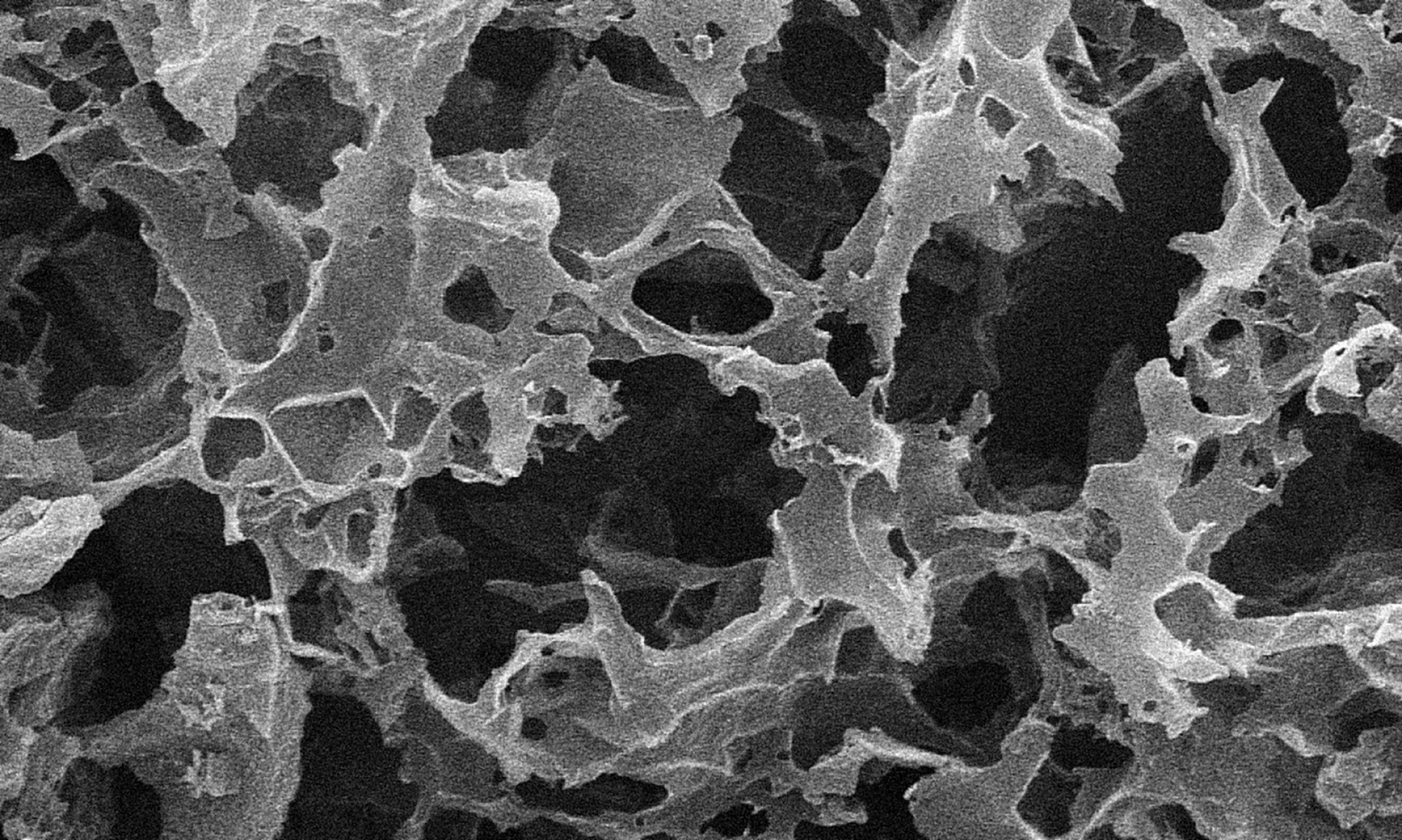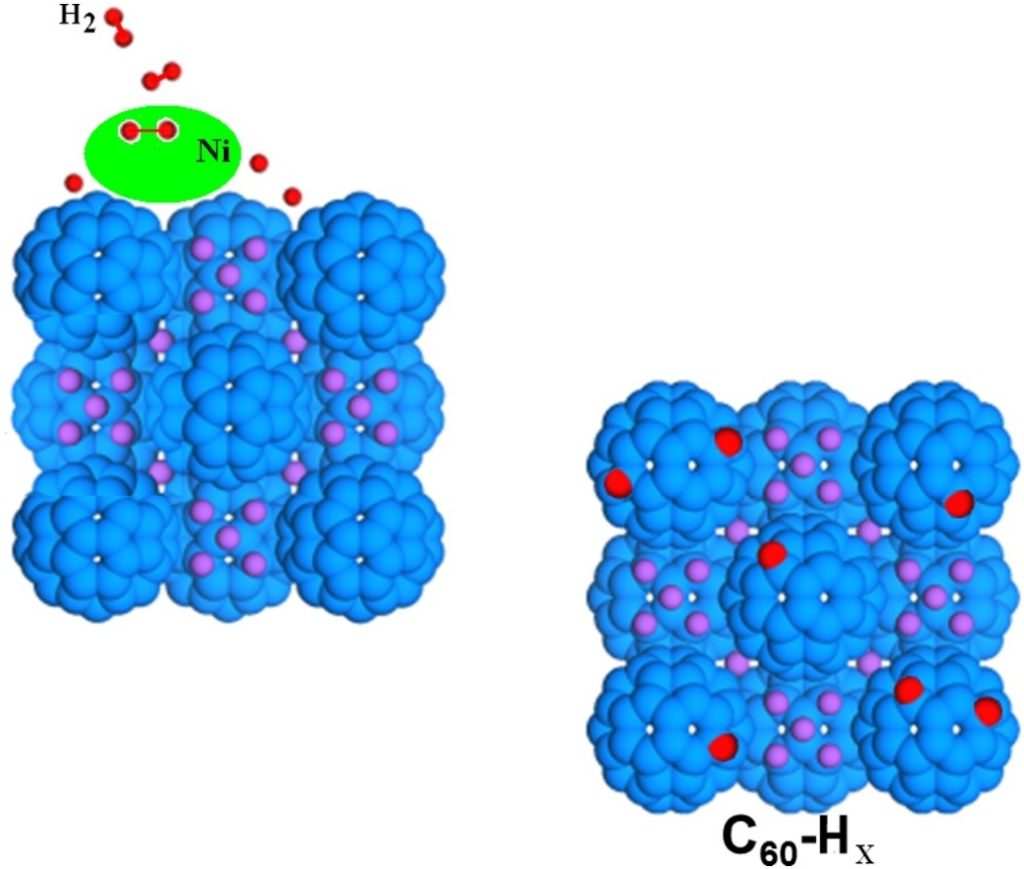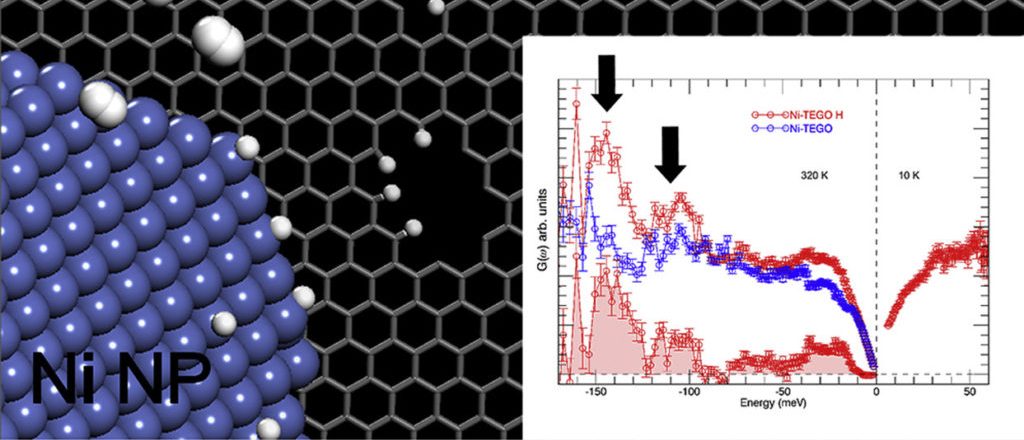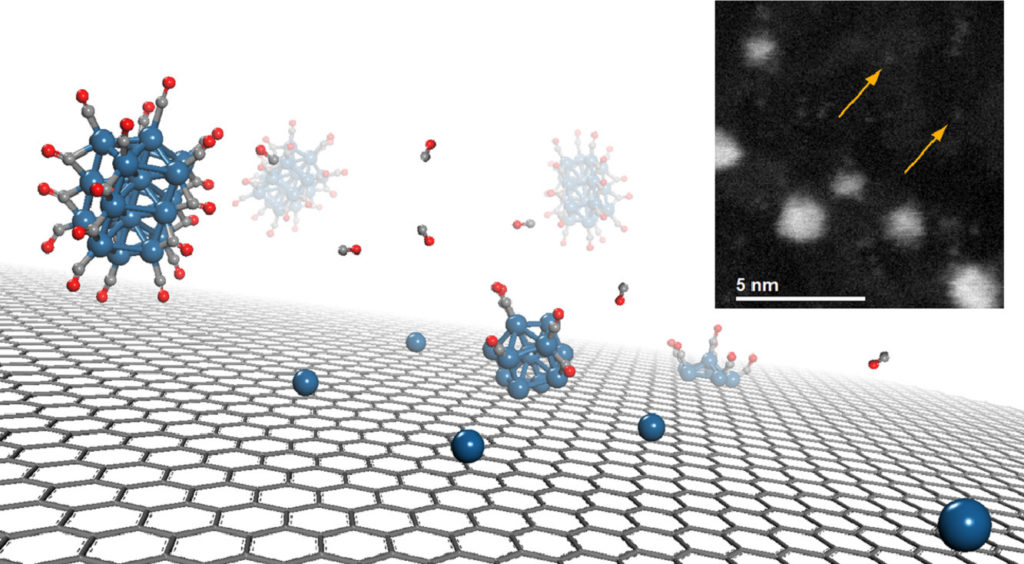The addition of transition metals to alkali intercalated fullerides proved to enhance their already good hydrogen absorption properties. Herein we present a study based on two different synthetic strategies, allowing the addition of nickel as aggregates with different size to the lithium fulleride Li6C60: the former is based on the metathesis of nickel chloride, while the latter on the thermal decomposition of nickel carbonyl clusters. The hydrogen-storage properties of the obtained materials have been investigated with manometric and calorimetric measurements, which indicated a clear enhancement of the final absorption value and kinetics with respect to pristine Li6C60, as a consequence of nickel surface catalytic activity towards hydrogen molecules dissociation. We found up to 10 % increase of the total H2 weight % absorbed (5.5 wt% H2) in presence of Ni aggregates. Furthermore, the control of the transition metal particles size distribution allowed reducing the hydrogen desorption enthalpy of the systems.
Reproduced with permission. Copyright 2020, Elsevier



